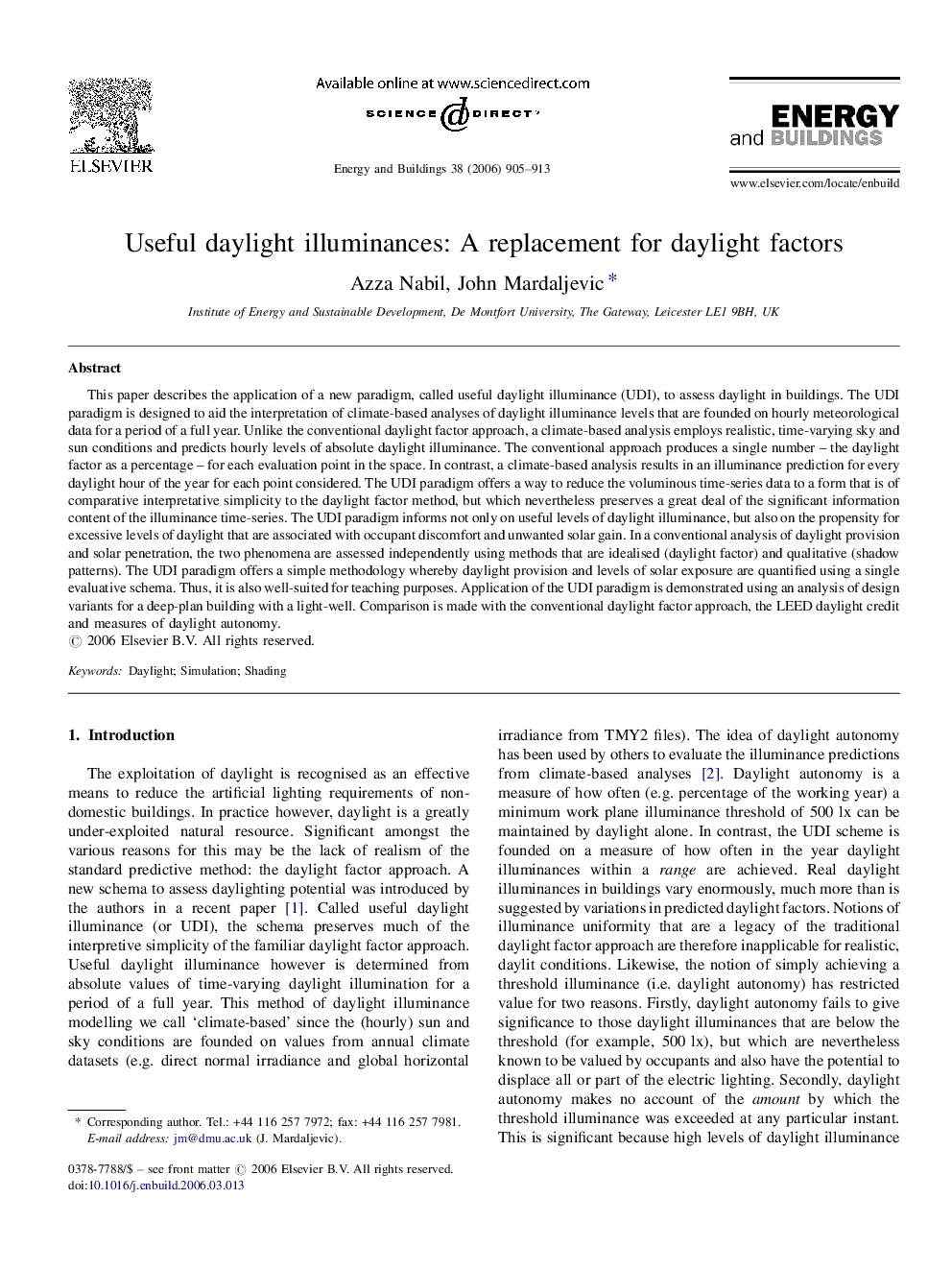| کد مقاله | کد نشریه | سال انتشار | مقاله انگلیسی | نسخه تمام متن |
|---|---|---|---|---|
| 265026 | 504127 | 2006 | 9 صفحه PDF | دانلود رایگان |

This paper describes the application of a new paradigm, called useful daylight illuminance (UDI), to assess daylight in buildings. The UDI paradigm is designed to aid the interpretation of climate-based analyses of daylight illuminance levels that are founded on hourly meteorological data for a period of a full year. Unlike the conventional daylight factor approach, a climate-based analysis employs realistic, time-varying sky and sun conditions and predicts hourly levels of absolute daylight illuminance. The conventional approach produces a single number – the daylight factor as a percentage – for each evaluation point in the space. In contrast, a climate-based analysis results in an illuminance prediction for every daylight hour of the year for each point considered. The UDI paradigm offers a way to reduce the voluminous time-series data to a form that is of comparative interpretative simplicity to the daylight factor method, but which nevertheless preserves a great deal of the significant information content of the illuminance time-series. The UDI paradigm informs not only on useful levels of daylight illuminance, but also on the propensity for excessive levels of daylight that are associated with occupant discomfort and unwanted solar gain. In a conventional analysis of daylight provision and solar penetration, the two phenomena are assessed independently using methods that are idealised (daylight factor) and qualitative (shadow patterns). The UDI paradigm offers a simple methodology whereby daylight provision and levels of solar exposure are quantified using a single evaluative schema. Thus, it is also well-suited for teaching purposes. Application of the UDI paradigm is demonstrated using an analysis of design variants for a deep-plan building with a light-well. Comparison is made with the conventional daylight factor approach, the LEED daylight credit and measures of daylight autonomy.
Journal: Energy and Buildings - Volume 38, Issue 7, July 2006, Pages 905–913